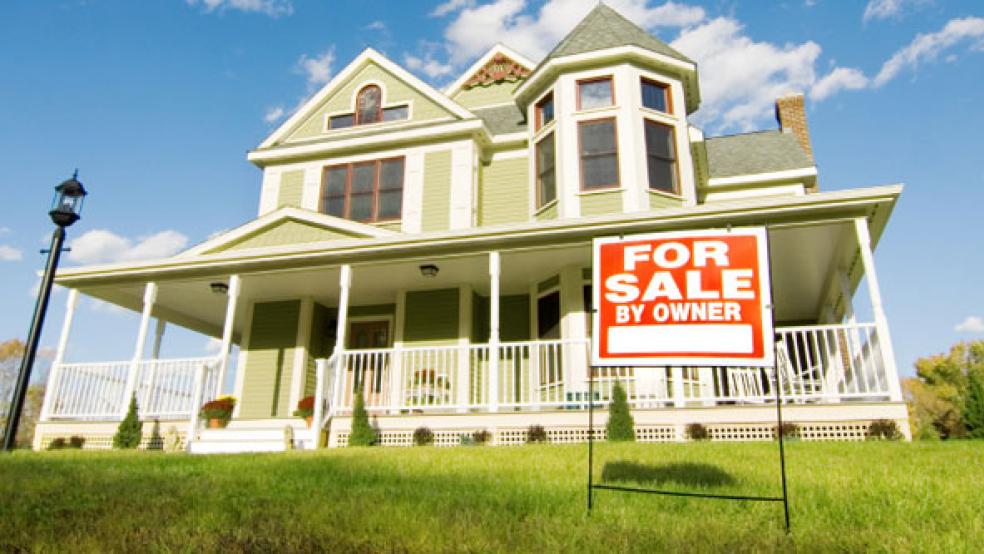By mid-May, the spring home-selling season is usually in full swing. But this year, many potential buyers are scared off by worries that a home bought this spring could be worth less a few months later. Others are eager to buy at today's low prices, but cannot get a mortgage because lenders have tightened standards to avoid a repeat of the foreclosure crisis.
What will the mortgage market, so essential to a healthy housing sector, look like in the future? One key is a rekindling of the private market for securitizations — the process of converting mortgages into bonds for sale to investors. Securitization provides the money lent to homeowners. In March, the Federal Reserve, Federal Deposit Insurance Corp. and four other agencies issued proposed new rules for the private securitization market — requirements likely to toughen standards for both borrowers and lenders. But many experts feel the proposals, which could be made official this summer, would not correct the mortgage market's problems – and could end up hurting consumers.
"I think it's a missed opportunity," says Susan M. Wachter, professor of real estate at Wharton and co-editor of a new book, The American Mortgage System: Crisis and Reform. "I think that we need obviously to envision a restructured housing finance system to replace the failed system that we have had, and this does not get us there."
Currently, more than 90% of new U.S. mortgages are backed by the government entities Fannie Mae, Freddie Mac and the Federal Housing Administration. After suffering huge losses from homeowners who failed to make payments, the Obama administration has proposed phasing out the two firms, but that can’t happen without a recovery in the private market.
The private securitization skyrocketed from 2004 to 2008, when it accounted for more than $2 trillion in outstanding mortgages. Since then, enormous losses have scared off the investors who buy private mortgage bonds, which do not carry the guarantees that make Fannie and Freddie bonds attractive.
The recent federal proposals, required under the 2010 Dodd-Frank financial reform law, are designed to discourage the issuance of risky mortgages and securities based on them. They would require that firms that issue mortgage-backed securities retain 5% of the investment risk contained in the bonds sold to investors. Having a stake in the bonds' investment prospects, should make the participants more careful in approving mortgages and putting the bond packages together, the agencies say.
But participants could avoid the 5% requirement when they securitize qualified residential mortgages (QRMs), which are deemed relatively safe from default by borrowers. These mortgages would require a borrower with a solid credit rating who will make a down payment of at least 20%. Many of the bad loans issued a few years ago required little or no down payment.
The 5% rule is meant to get "loan originators to stop dumping just the bad stuff" into mortgage securities, says Kent Smetters, professor of insurance and risk management at Wharton. The QRM alternative effectively shifts risk, or the consequences of default, from the lenders to the homeowners, he notes. That approach might be reasonable because [borrowers] probably have the most information about their ability to pay, he says. But a 20% down payment requirement would probably reduce the level of home ownership in the U.S
In announcing the proposals, FDIC Chairman Sheila C. Bair said she expected QRMs to be "a small slice" of the mortgage market, with the bulk of the market composed of a variety of mortgage types issued under the 5% risk-retention rule. But critics think lenders will be so averse to keeping money at risk that the QRM loans would become the industry standard.
Jack M. Guttentag, an emeritus professor of finance at Wharton who runs The Mortgage Professor, argues that a 20% down payment requirements would unfairly make future borrowers pay for the mortgage industry's excesses in 2005, 2006 and 2007. "What's so terrible is that it knocks a segment of the population out of the market," he says, noting that prior to the recent crisis, default rates were not bad on loans with down payments of only 5% to 10%.
Given the severe problems that continue in the housing and mortgage sectors, Wachter and Guttentag think it could be several years before a private securitization market begins to take over from Fannie and Freddie. Although lending standards are strict today, lenders, securitizers and investors have to be concerned about what would happen if too many lenders loosen standards too much in the future, Wachter notes. That could shake confidence in all mortgage securities, even those based on loans with sound underwriting standards.
Improving home prices are also key to rebuilding the private securitization market, she adds. Homeowners are less likely to default when prices are rising, because they don't want to lose their equity in foreclosure. If prices continue to fall, defaults will be a persistent worry, discouraging private securitizations by scaring off investors.
Wachter, who has testified on securitization before Congress, believes the risk-retention and QRM rules currently under consideration may well be reviewed. The proposals have been criticized by a wide range of groups, from home builders and real estate agents to consumer advocates.
"I think we are back to the drawing board," she says.
Republished with permission from Knowledge@Wharton , the online research and business analysis journal of the Wharton School of the University of Pennsylvania.





